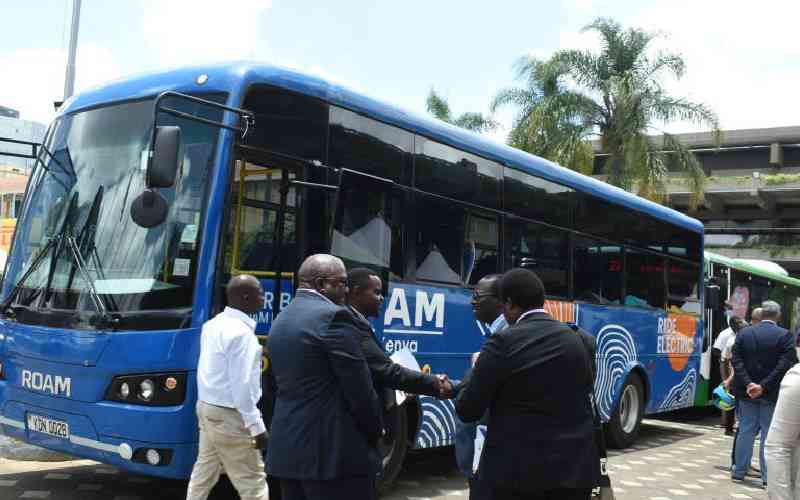
Athi River is one of Kenya’s most strategic towns. Less than an hour’s drive away from the capital city, it bears a balance of industrial, residential and commercial development. The town hosts six cement factories.
If everything goes according to plan, hyperbolic cooling towers from East Africa’s first nuclear energy reactor could sprout out of Athi River’s plains by 2025.
It has been five years since Kenya announced it is actively pursuing the development of nuclear energy as one of the generation sources to boost the country’s electricity grid.
The country’s nuclear energy strategy proposes four nuclear power plants by 2031, each with an installed capacity of 1,000 MW of energy that will provide continuous electricity supply for the next 60 years.
Energy needs
“The demand for energy in the Kenyan economy is estimated to be at 19,000MW by 2030,” said Ochilo Ayako, the chairman of the Kenya Nuclear Energy Board (KNEB).
“This is expected to power our rail, port and pipeline infrastructure, resort cities and manufacturing industries.”
Mr Ayako is Kenya’s foremost advocate for nuclear energy. Tall, with calm bespectacled eyes, he speaks in a deep sonorous monotone and rarely gesticulates, maintaining intense eye contact as he explains why Kenya needs a nuclear energy reactor.
A former two-term member of Parliament for Rongo Constituency, Ayako has served under the Moi and Kibaki regimes and held two ministerial dockets — sports and energy — in the latter’s administration, one of which positioned him for his current role.
“Our energy needs have been made even more urgent by the establishment of the counties because if you were to give each of the 47 counties just 500MW to power its energy needs, you are looking at a demand of about 24,000MW.”
The World Bank states that lack of adequate electricity shaves off two percentage points from a country’s growth rate annually.
Data from the Energy ministry states that the country’s installed capacity currently stands at slightly over 2,147MW, made up by hydro, geothermal, wind, thermal and biomass sources.
More than 65 per cent of the country’s population is without an electricity connection.
“Our energy strategy needs to address two main concerns; quick to set up and competitive, meaning that consumers should get continuous power supply at affordable tariffs,” said Ayako.
He added that Kenya’s future energy infrastructure is not just for the country alone, but would have secondary beneficiaries in the region.
“At the moment we are exporting financial services to the East African region, and we want to be a net exporter of energy in the coming years even as we move forward with the East African regional integration process.
“Today, there are projects that Kenya cannot bid for in the international market because we do not have the appropriate energy supply, and our generation costs are high and are passed on to the consumer.”
Nuclear Games
Kenya is not alone in the quest to become a net exporter of energy in sub-Saharan Africa.
Six out of 10 people in Africa do not have access to electricity, and only seven out of the 53 countries on the continent have more than 50 per cent nation-wide electricity coverage. Only two — South Africa and Ghana — have electricity access rates that exceed 70 per cent.
The revenue opportunities are boundless, and it is in the interests of African economic giants to develop enough energy capacity to not only power their own economies, but also serve a growing continent-wide market starved of energy.
South Africa leads the continent and despite being home to over half of Africa’s installed capacity, it still has to undergo crippling load-shedding — which involves scheduled blackouts in certain parts of the electricity grid to prevent a complete shutdown of the national grid — on account of inadequate supply capacity.
Egypt, Nigeria, Ghana, Senegal and Morocco are engaged in a race towards achieving nuclear energy, with each of the countries having nuclear projects at various stages of planning and execution.
It is thus a crowded race that Kenya runs, with the country representing the energy interests of the East African region.
The concerns
However, there have been concerns about the rationale behind Kenya constructing a nuclear power plant, particularly in the presence of alternative, less complicated generation sources.
Global consulting firm McKinsey states that Kenya possesses 40 per cent of Africa’s 15,000MW of proven geothermal resource potential. Almost all of it is bottled in the Rift Valley.
So far, Kenya has tapped into less than 2 per cent of this resource.
In addition, there is more energy potential from natural gas that is estimated to be twice as much as the potential from geothermal.
Last month, American firm Sky Power announced a project to construct a 1,000MW solar energy plant in the country, with global conglomerate General Electric also announcing plans to set up a 100MW wind farm.
Aside from the readily available alternatives, the risks associated with nuclear energy are also high
 The Standard Group Plc is a multi-media organization with investments in media
platforms spanning newspaper print operations, television, radio broadcasting,
digital and online services. The Standard Group is recognized as a leading
multi-media house in Kenya with a key influence in matters of national and
international interest.
The Standard Group Plc is a multi-media organization with investments in media
platforms spanning newspaper print operations, television, radio broadcasting,
digital and online services. The Standard Group is recognized as a leading
multi-media house in Kenya with a key influence in matters of national and
international interest.
 The Standard Group Plc is a multi-media organization with investments in media
platforms spanning newspaper print operations, television, radio broadcasting,
digital and online services. The Standard Group is recognized as a leading
multi-media house in Kenya with a key influence in matters of national and
international interest.
The Standard Group Plc is a multi-media organization with investments in media
platforms spanning newspaper print operations, television, radio broadcasting,
digital and online services. The Standard Group is recognized as a leading
multi-media house in Kenya with a key influence in matters of national and
international interest.










